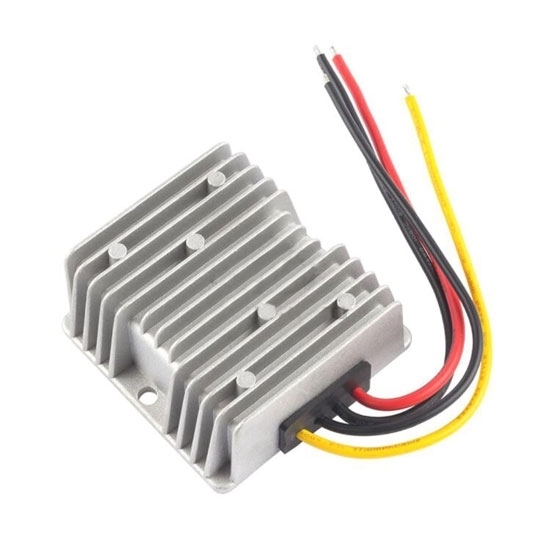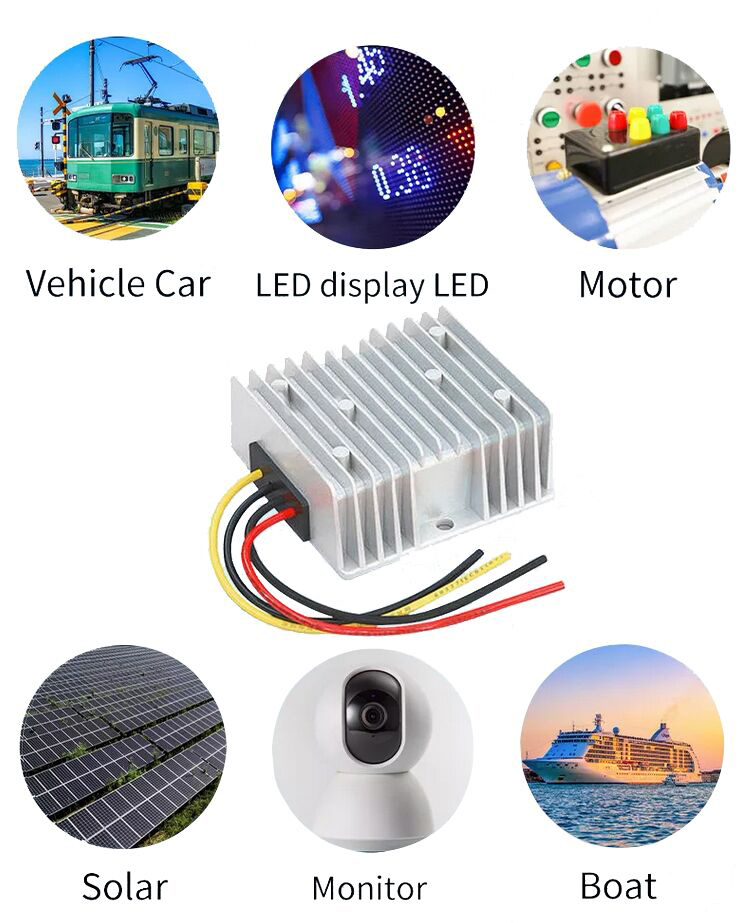60V to 12V DC-DC buck converter adopts synchronous rectification technology to improve conversion efficiency, stable output. Efficiency:>90%; Starting delay time: ≤ 2 S.
Voltage reducer compacts aluminum shell with epoxy potting, IP68 waterproof, anti-dust, anti-shock protection, better heat dissipation, compact size and light weight for wide applications.

Features
- The DC-DC buck converter uses synchronous rectification technology, has high conversion efficiency and stable performance.
- With potentiometer on the bottom, which allows you adjust the accuracy with the mini screw, but ensures you won’t easily change its setting when mounted.
- Fully sealed, outer enclosure acts as a heat sink, specially made to be waterproof, anti-shock, anti-humidity and dust-proof, more durable.
- 60V to 12V DC-DC buck converter is with reversed-connection protection, over-current protection, over-heating protection and over-voltage protection, hence is safe to use.
- Wide input voltage range: 8V to 36V.
- Auto-recovery when device is back to normal operating.
- Built-in full protection against over/under voltage input, over-current, overload, overhead, over-temperature and short circuit.
- Perfect for electronic hobby project, industry grade DC 60V to 12V buck converter.
- widely used in automotive, electricity, surveillance systems, railway signals, instruments, solar generate electricity, display screen of bus and taxi, car audio device, security systems, hospital equipment, telecommunications, etc.
Specification
| Input voltage range | 50-75V |
| Output voltage | 12V |
| Output current | 5A/10A/15A/20A |
| Output power | 60W/120W/180W/240W |
| Efficiency | >90% |
| Working temperature | -40 ~ +80℃ |
| Working humidity | 10% ~ 90%RH |
| Storage temperature | -40 ~ +100℃ |
| Short circuit protection | YES |
| Over current protection | YES |
| Waterproof | IP68 |
| Over temperature protection | YES |
| Over voltage protection | YES |
| Weight | 300g |
Application

Note
- Input battery power should more than output power.
- Please don’t connect the input and output in reverse.
- Please don’t connect the positive and negative in reverse.